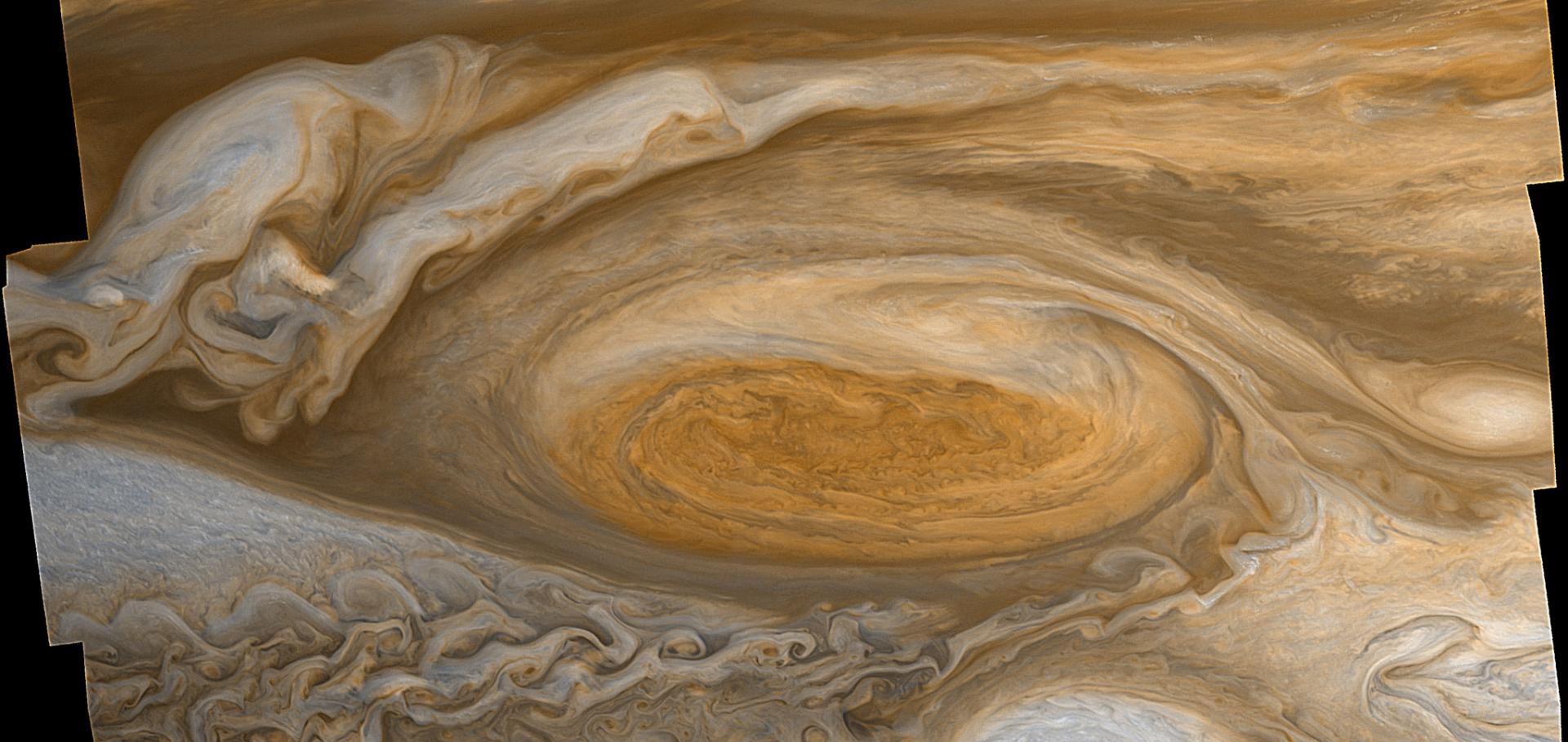The Martian Planetary Boundary Layer
Chapter in The Atmosphere and Climate of Mars, Cambridge University Press (CUP) (2017) 172-202
A rotating annulus driven by localized convective forcing: a new atmosphere-like experiment
Experiments in Fluids Springer Berlin Heidelberg 2017:58 (2017) 75
Abstract:
We present an experimental study of flows in a cylindrical rotating annulus convectively forced by local heating in an annular ring at the bottom near the external wall and via a cooled circular disk near the axis at the top surface of the annulus. This new configuration is distinct from the classical thermally-driven annulus analogue of the atmosphere circulation, in which thermal forcing is applied uniformly on the sidewalls, but with a similar aim to investigate the baroclinic instability of a rotating, stratified flow subject to zonally symmetric forcing. Two vertically and horizontally displaced heat sources/sinks are arranged so that, in the absence of background rotation, statically unstable Rayleigh-Bénard convection would be induced above the source and beneath the sink, thereby relaxing strong constraints placed on background temperature gradients in previous experimental configurations based on the conventional rotating annulus. This better emulates local vigorous convection in the tropics and polar regions of the atmosphere whilst also allowing stably-stratified baroclinic motion in the central zone of the annulus, as in midlatitude regions in the Earth’s atmosphere. Regimes of flow are identified, depending mainly upon control parameters that in turn depend on rotation rate and the strength of differential heating. Several regimes exhibit baroclinically unstable flows which are qualitatively similar to those previously observed in the classical thermally-driven annulus, However, in contrast to the classical configuration, they typically exhibit more spatiotemporal complexity. Thus, several regimes of flow demonstrate the equilibrated co-existence of, and interaction between, free convection and baroclinic wave modes. These new features were not previously observed in the classical annulus and validate the new setup as a tool for exploring fundamental atmosphere-like dynamics in a more realistic framework. Thermal structure in the fluid is investigated and found to be qualitatively consistent with previous numerical results, with nearly isothermal conditions respectively above and below the heat source and sink, and stably-stratified, sloping isotherms in the near-adiabatic interior.Ertel potential vorticity versus Bernoulli streamfunction on Mars
Quarterly Journal of the Royal Meteorological Society Wiley 143:702 (2016) 37-52
Abstract:
Scatter plots of Ertel potential vorticity, Q, versus Bernoulli streamfunction, B, on potential temperature surfaces, θ, are investigated for Mars using the global Mars Analysis Correction Data Assimilation (MACDA) reanalysis, which spans Mars Year (MY) 24.39 to 27.24. In midlatitudes, Mars exhibits monotonic, function-like Q(B) correlations on θ surfaces similar to those observed for Earth. We quantify this with linear regressions of Q versus B over the vertical range θ=400 to 900 K (∼30 to 60 km). In autumn, winter and spring, in both hemispheres, the non-dimensionalized correlation generally lies between zero and unity and gradually decreases with height, whereas in northern summer, it swings negative. These characteristics match Earth's lower mesosphere (θ= 2000 to 3000 K; z≈ 48 to 62 km) during the same seasons. The exception is southern summer, when the correlation on Mars nearly vanishes. In time series, the transition into and out of northern summer is sinuous and centred just after solar longitude Ls = 90°, whereas in southern summer it is abrupt and spans ΔLs≈120°, which is one third of a Mars year. A striking feature seen on Mars but not on Earth is a large range of Q over the narrow domain of B poleward of each winter polar jet, particularly in the north, which is consistent with the known annular structure of the Martian polar vortex. Froude number calculations suggest the existence of a planetary-scale hydraulic jump associated with the winter polar jet.Exploring the Venus global super-rotation using a comprehensive general circulation model
Planetary and Space Science Elsevier 134 (2016) 1-18
Abstract:
The atmospheric circulation in Venus is well known to exhibit strong super-rotation. However, the atmospheric mechanisms responsible for the formation of this super-rotation are still not fully understood. In this work, we developed a new Venus general circulation model to study the most likely mechanisms driving the atmosphere to the current observed circulation. Our model includes a new radiative transfer, convection and suitably adapted boundary layer schemes and a dynamical core that takes into account the dependence of the heat capacity at constant pressure with temperature.The new Venus model is able to simulate a super-rotation phenomenon in the cloud region quantitatively similar to the one observed. The mechanisms maintaining the strong winds in the cloud region were found in the model results to be a combination of zonal mean circulation, thermal tides and transient waves. In this process, the semi-diurnal tide excited in the upper clouds has a key contribution in transporting axial angular momentum mainly from the upper atmosphere towards the cloud region. The magnitude of the super-rotation in the cloud region is sensitive to various radiative parameters such as the amount of solar radiative energy absorbed by the surface, which controls the static stability near the surface. In this work, we also discuss the main difficulties in representing the flow below the cloud base in Venus atmospheric models.Our new radiative scheme is more suitable for 3D Venus climate models than those used in previous work due to its easy adaptability to different atmospheric conditions. This flexibility of the model was crucial to explore the uncertainties in the lower atmospheric conditions and may also be used in the future to explore, for example, dynamical-radiative-microphysical feedbacks.A regime diagram for ocean geostrophic turbulence
Quarterly Journal of the Royal Meteorological Society Wiley 142:699 (2016) 2411-2417


